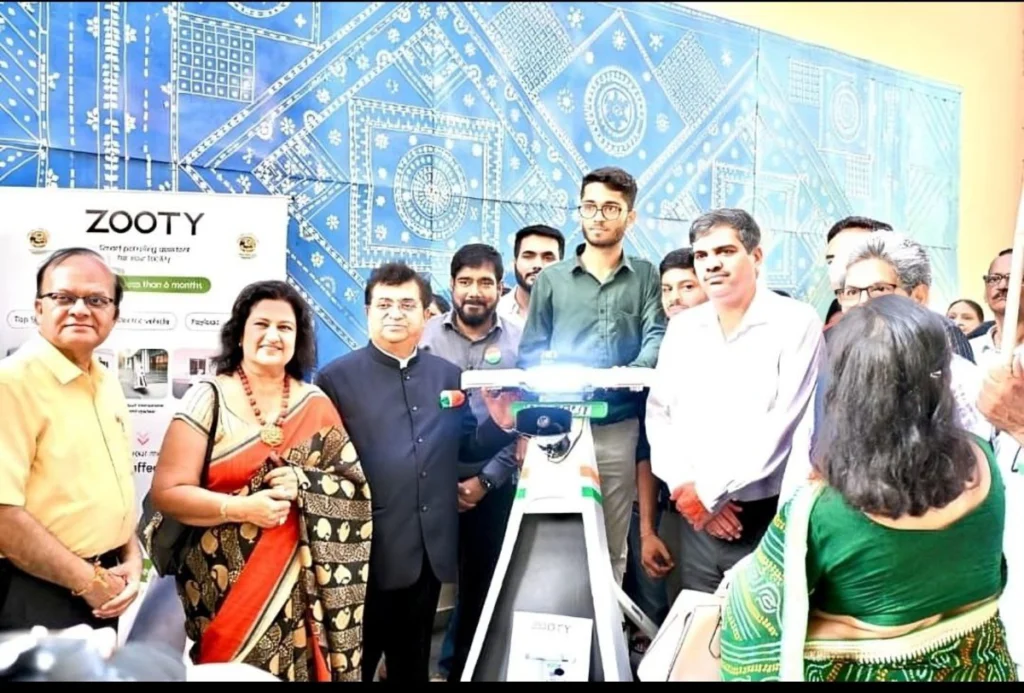CyberRidge, the Tel Aviv-based photonic encryption startup pioneering a revolutionary approach to securing data in transit, has emerged from stealth with $26 million in total funding—comprising a $10 million seed led by Canadian-Israeli investment group Awz, followed by a $16 million extension from Arkin Capital, Redseed VC, Elron Ventures, and the EU Horizon-EIC program. But beyond the institutional backing and deep-tech credentials of founder Professor Dan Sadot, this capital deployment raises a fundamental question: why is strategic capital flooding into optical fiber security infrastructure when over 95% of international data already flows through subsea cables protected by conventional encryption?
The $10 Billion Quantum Decryption Crisis Nobody Can Afford To Ignore
The answer lies in understanding an existential cybersecurity threat accelerating faster than most enterprises realize. The quantum security market is projected to surge from approximately $700 million today to $10 billion by 2030, growing at over 50% compound annual growth rate—driven by a chilling reality that the average total cost of a data breach reached $4.45 million in 2023. Yet traditional encryption faces obsolescence from quantum computing advances, while over 95% of international digital communication—including banking records, government data, AI workloads, and medical information—flows through fiber-optic cables, including vulnerable subsea lines.
CyberRidge operates the world’s first plug-and-play photonic layer transmission system that integrates with existing fiber infrastructure to transform data into encrypted optical noise—making intercepted information literally unrecordable and unrecoverable, even by quantum computers. The company addresses a growing but invisible threat: the interception and long-term storage of global data traveling through optical fiber for future quantum decryption. This architecture confronts what cybersecurity experts call “harvest now, decrypt later” attacks—where adversaries capture encrypted data today, storing it until quantum computers become powerful enough to break current encryption standards within seconds.
Why Software-Based Quantum Protection Can’t Solve Fiber Infrastructure Vulnerabilities
CyberRidge’s explosive market entry validates why specialized photonic security commands institutional capital rather than software-based encryption upgrades. Founded by Professor Dan Sadot—a Ben-Gurion University researcher with nearly 30 years of optical communication experience—the technology is already being deployed by leading global players across telecommunications providers, defense and intelligence agencies, with early implementations in Europe, Singapore, and Australia including Israel’s military intelligence units.
The $26 million funding structure signals investor recognition that optical fiber security represents distinct infrastructure requirements from conventional cybersecurity. The proprietary photonic key changes every fraction of a second and must be present at the exact moment the light signal arrives—creating temporal security impossible for quantum computers to retroactively compromise. This differentiates from Post-Quantum Cryptography, which remains vulnerable to mathematical breakthroughs, and Quantum Key Distribution, which protects only encryption keys while leaving payload data exposed during transmission.
The Strategic Capital Validation Behind Quantum-Resistant Infrastructure
The funding round brings Awz—a Canadian-Israeli investment group specializing in deep-tech infrastructure—as lead investor alongside Arkin Capital, Redseed VC, Elron Ventures, and the EU Horizon-EIC program. Yaron Ashkenazi, founder and CEO of Awz, noted that “as quantum decryption advances, truly secure solutions are increasingly rare”, emphasizing the temporal urgency driving institutional capital allocation toward photonic security rather than incremental software improvements.
This institutional backing structure differentiates from traditional cybersecurity venture investments through focus on physical layer protection. The quantum computing market itself is projected to grow from $1.1 billion in 2024 to $1.47 billion in 2025, representing 34% compound annual growth—acceleration that simultaneously creates commercial quantum computing opportunities while rendering conventional encryption vulnerable. The strategic capital thesis recognizes that quantum threat timeline has compressed dramatically, with 60% in Canada and 73% in the US believing “it’s only a matter of time” before cybercriminals use quantum power to decrypt current cybersecurity protocols.
The Technology Platform Making Data Literally Disappear
CyberRidge’s system transforms data into encrypted optical noise by spreading information across many different light wavelengths, with a special decryption key refreshed multiple times every second that must be present at the exact moment the light signal arrives. This operational architecture solves dual infrastructure failures: conventional encryption assumes data theft and attempts computational resistance, while CyberRidge prevents data recording entirely through photonic manipulation.
CEO Dan Sadot explained: “We are transmitting the data in a way that is unobservable. If an adversary cuts the cables and tries to steal the data, they would only capture random noise”. The technology leverages total internal reflection principles where light pulses bounce through optical fibers—but unlike standard transmission, CyberRidge distributes data across wavelength spectrums in patterns requiring proprietary photonic keys reconstructing information only during femtosecond-precision temporal windows.
Why This Matters For Global Cybersecurity Infrastructure
CyberRidge’s $26 million raise positions the company within broader 2025 cybersecurity dynamics where quantum-resistant platforms attract institutional capital. Quantum computing in cybersecurity is expected to grow at 25.1% CAGR from 2025 to 2033, yet most investment targets software-based solutions rather than physical infrastructure protection—creating the precise market positioning advantage CyberRidge captures through fiber-layer security.
Enterprise Segment Vulnerability: KPMG research shows 95% of respondents believe quantum computing’s impact on cryptographic security systems is “very high or high,” yet only 25% of firms have prepared quantum-resistant strategies. This preparedness gap creates urgency where organizations recognize quantum threat severity without implementing protective infrastructure—precisely the adoption barrier CyberRidge’s plug-and-play architecture addresses.
Geopolitical Infrastructure Competition: China has increasing control over global cable networks while both China and the USA financially support allied-owned cable projects and exert diplomatic pressure. Subsea cable infrastructure has transformed from neutral telecommunications utility into strategic geopolitical asset requiring sovereignty-protecting security layers independent of software encryption standards potentially compromised through nation-state quantum computing capabilities.
The Answer: Physical Layer Protection For The Quantum Era
So why $26 million for CyberRidge emerging from stealth with prototype technology? Because the company combines four elements institutional investors value: proprietary photonic encryption technology eliminating data recording capability rather than relying on computational complexity; proven deployment validation through telecommunications providers, defense agencies, and intelligence organizations across multiple continents; market timing where quantum threat acceleration compresses from distant theoretical risk to immediate commercial vulnerability requiring preemptive infrastructure protection; and plug-and-play architecture enabling rapid adoption across existing fiber networks without requiring cable replacement or endpoint software updates.
The funding structure from seed through extension within months validates market recognition that photonic security represents paradigm shift from software-based encryption toward physical layer protection. With production hardware targeting March 2026 deployment, telecommunications provider partnerships expanding beyond initial military intelligence implementations, and quantum security market projections reaching $10 billion by 2030, CyberRidge positions itself as the infrastructure layer for quantum-resistant fiber networks—analogous to how SSL/TLS became standard for web encryption.
I’m Araib Khan, an author at Startups Union, where I share insights on entrepreneurship, innovation, and business growth. This role helps me enhance my credibility, connect with professionals, and contribute to impactful ideas within the global startup ecosystem.




